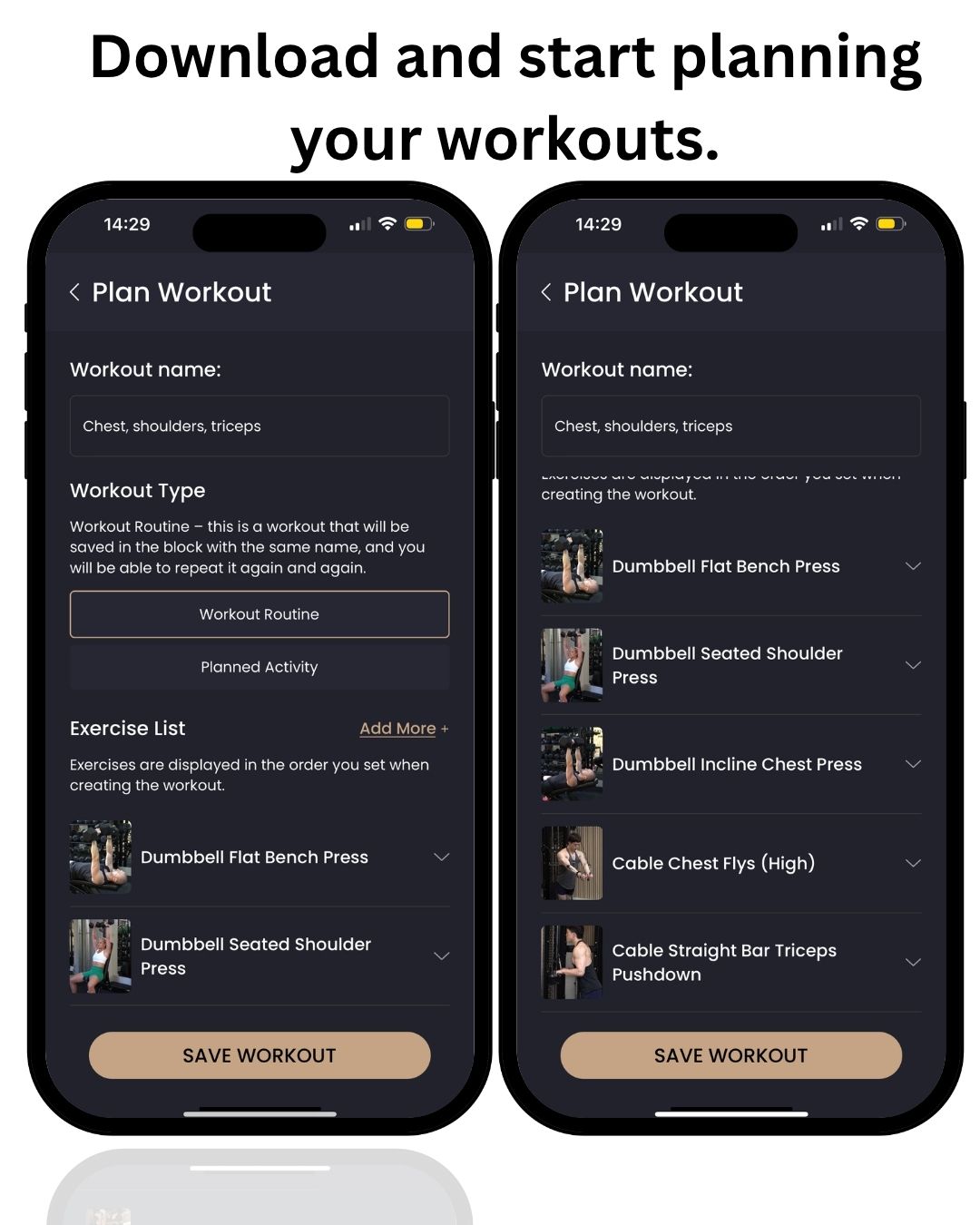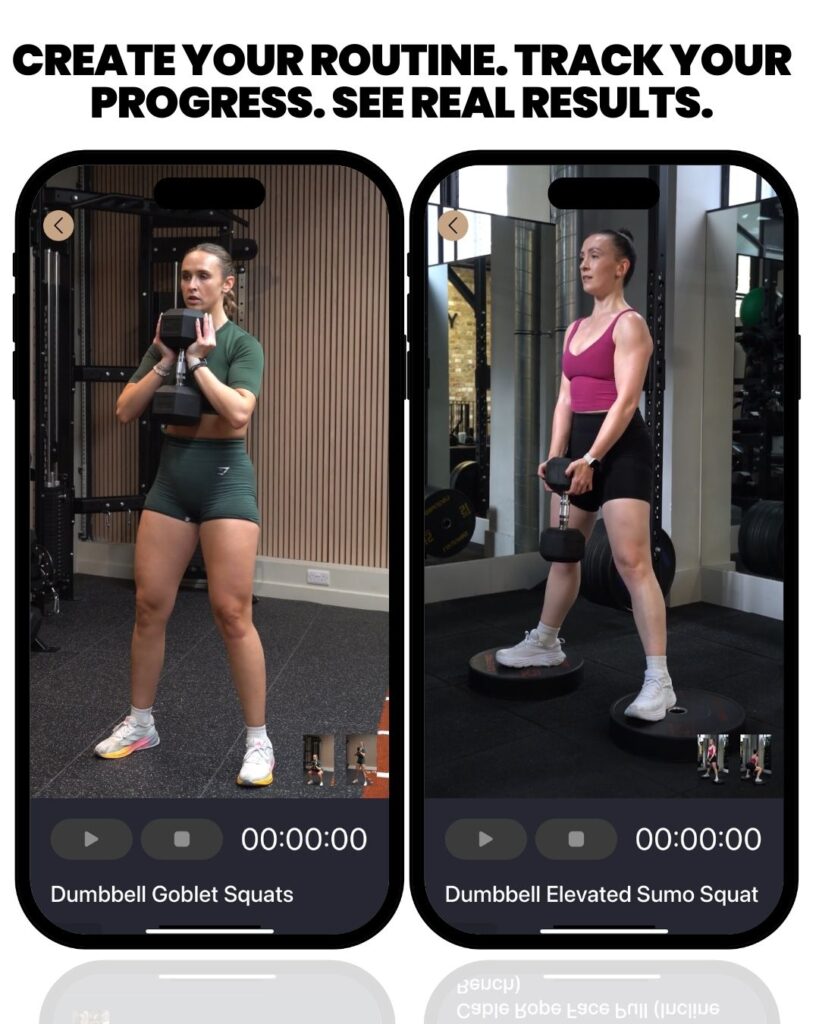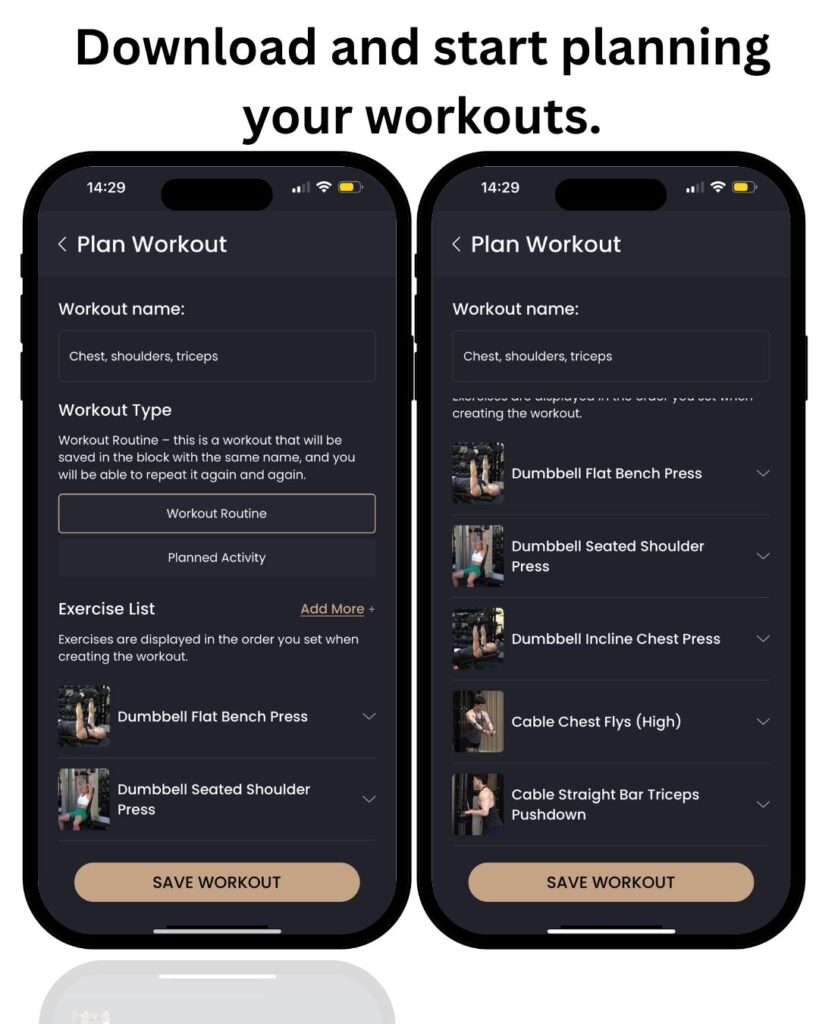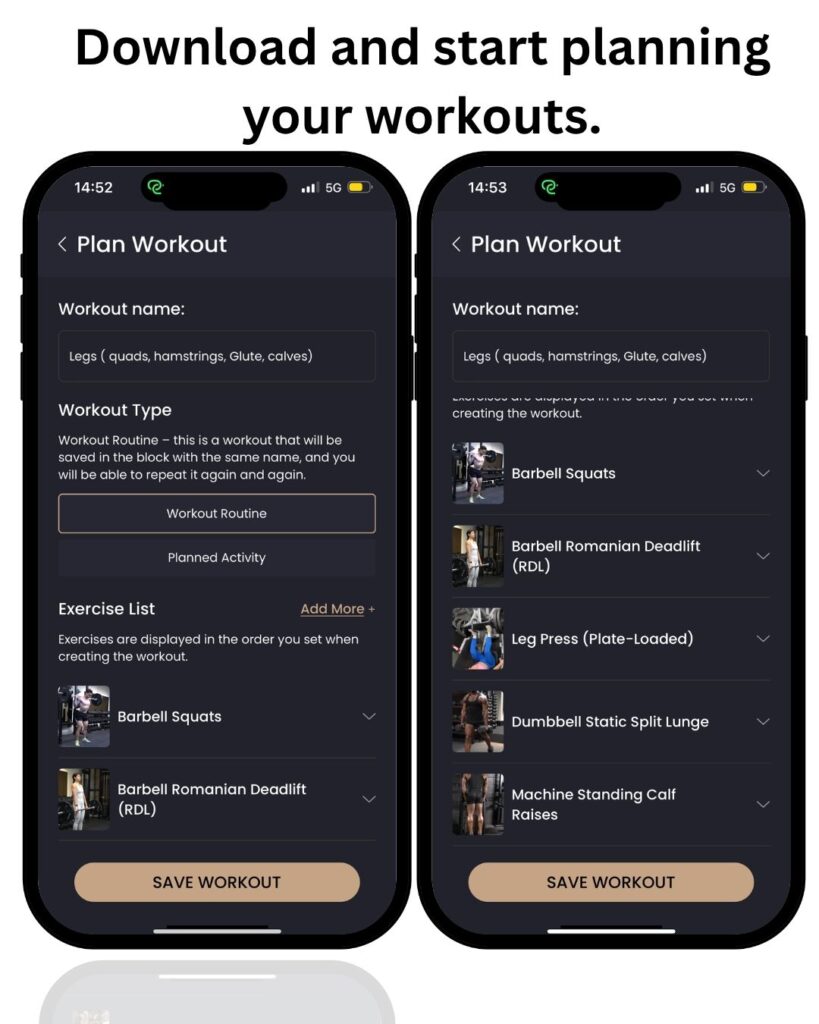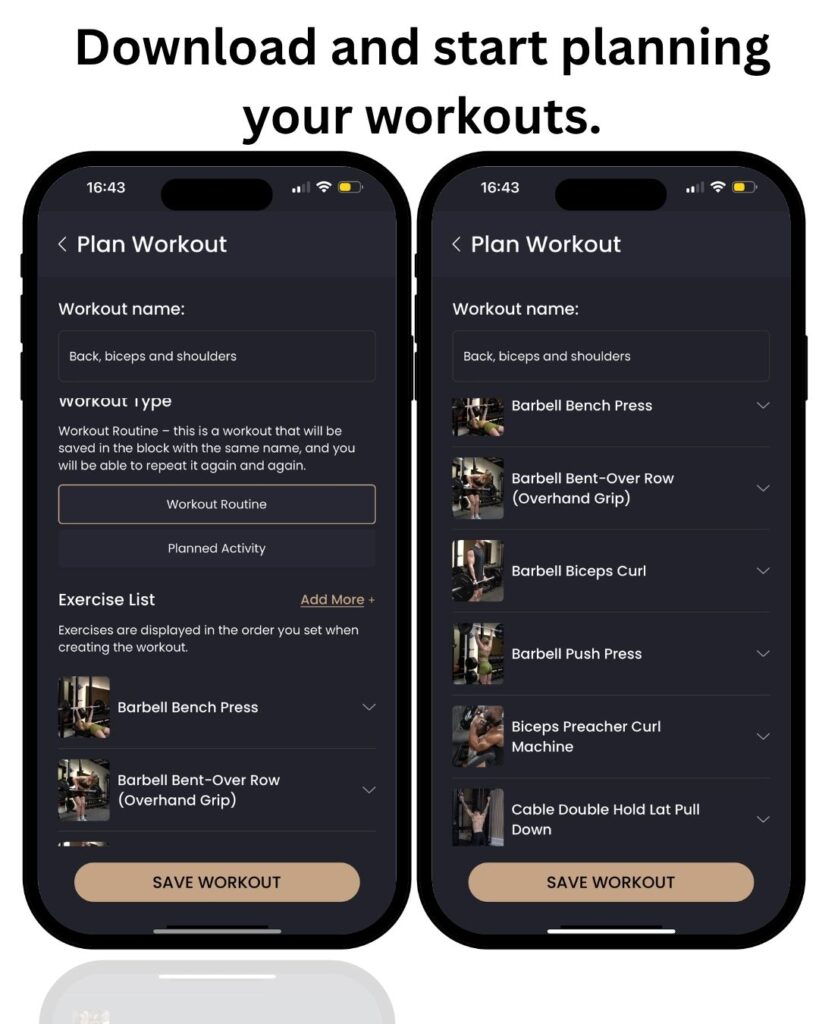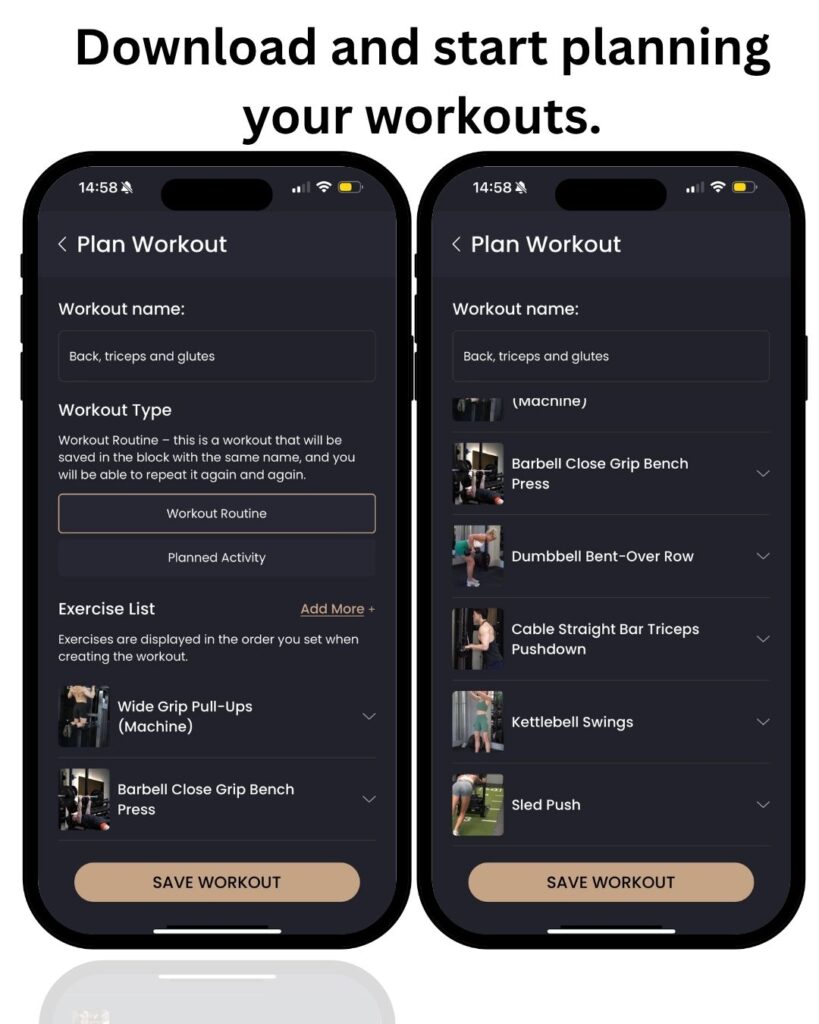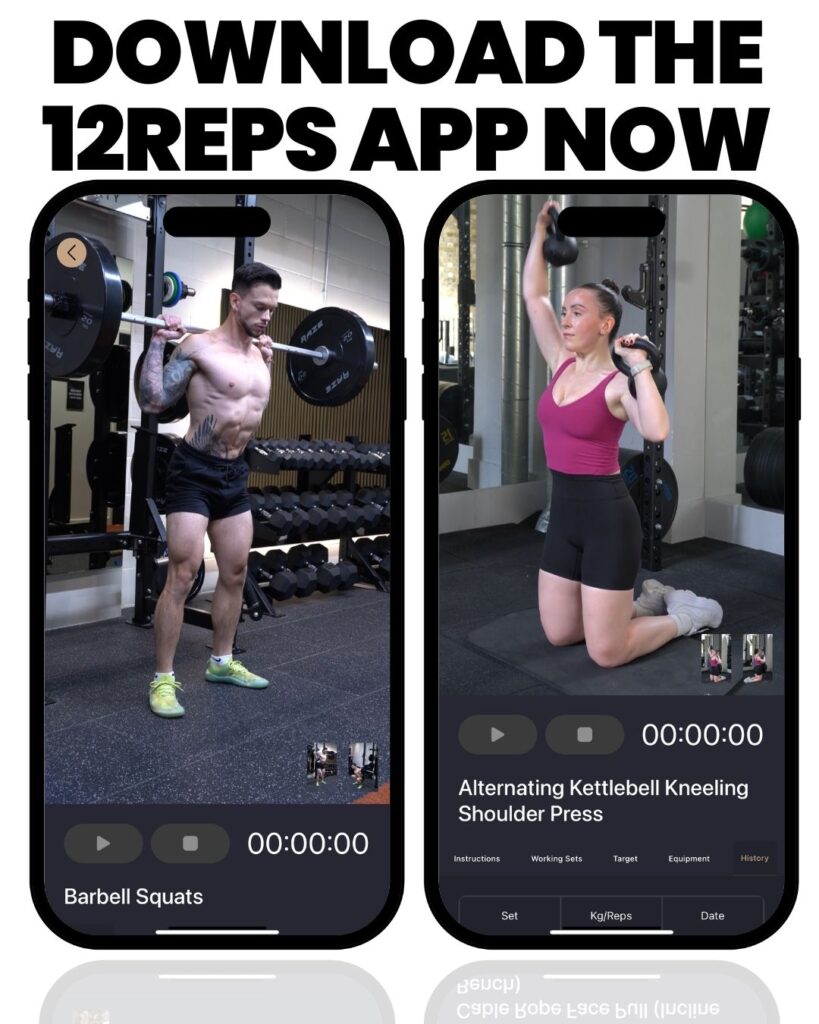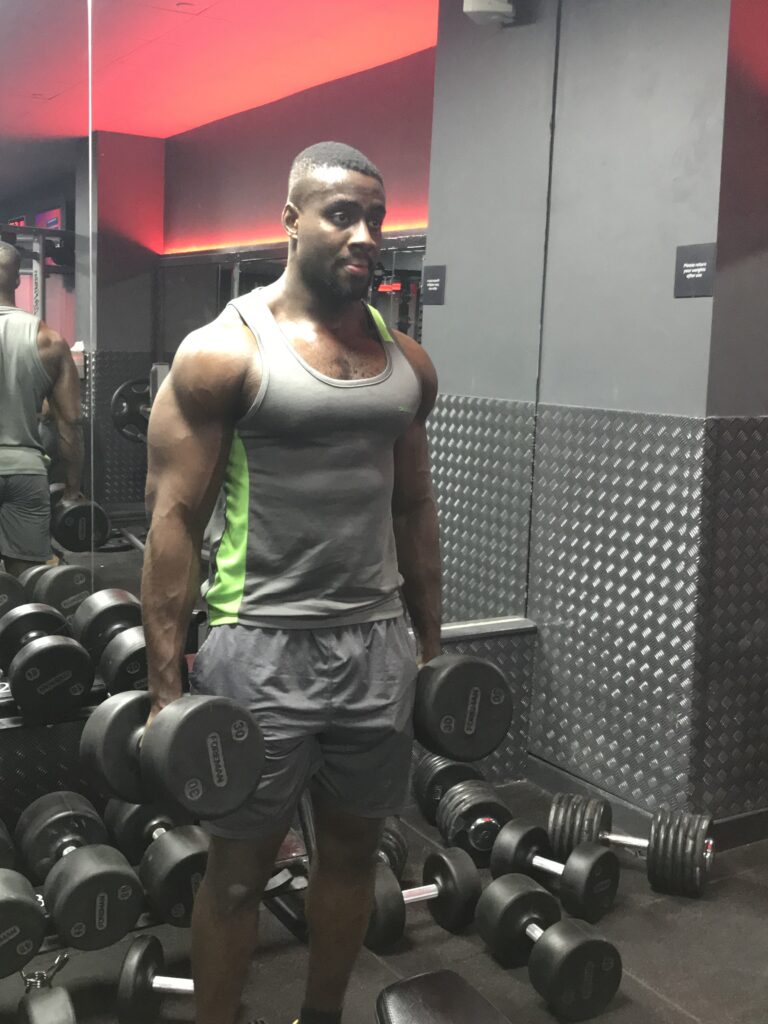By Will Duru, BSc (Hons) Sport and Exercise Science, Award-winning Personal Trainer
Welcome to your ultimate guide to building a stronger, more muscular physique. If you’re a beginner looking to gain 10kg of lean muscle in the next 6 months, you’ve come to the right place. My name is Will Duru, and with over a decade of experience in strength training and recovery optimisation, I’ve designed a 5-day strength training split that is both effective and easy to follow. This program is built around the proven principles of push, pull, and leg workouts, supplemented with core and cardio sessions to create a well-rounded routine. The main purpose of this push/pull/legs program is to help you build muscle and have structure in your training. We will delve into the specifics of why this split is so effective for beginners and how you can tailor it to your needs. I will also guide you through the often-overlooked aspects of training —nutrition, recovery, and mindset— that are just as important as lifting weights. My goal is to empower you with the knowledge and tools to not only achieve your muscle-building goals but also build a sustainable, enjoyable fitness lifestyle.
This article will not only provide you with a detailed 6-month program but also educate you on the fundamental principles of muscle growth, including the importance of a structured training split, progressive overload, nutrition, and recovery. We’ll get straight to the point, using simple language to ensure you understand exactly what you need to do to achieve your goals. Let’s begin your transformation.
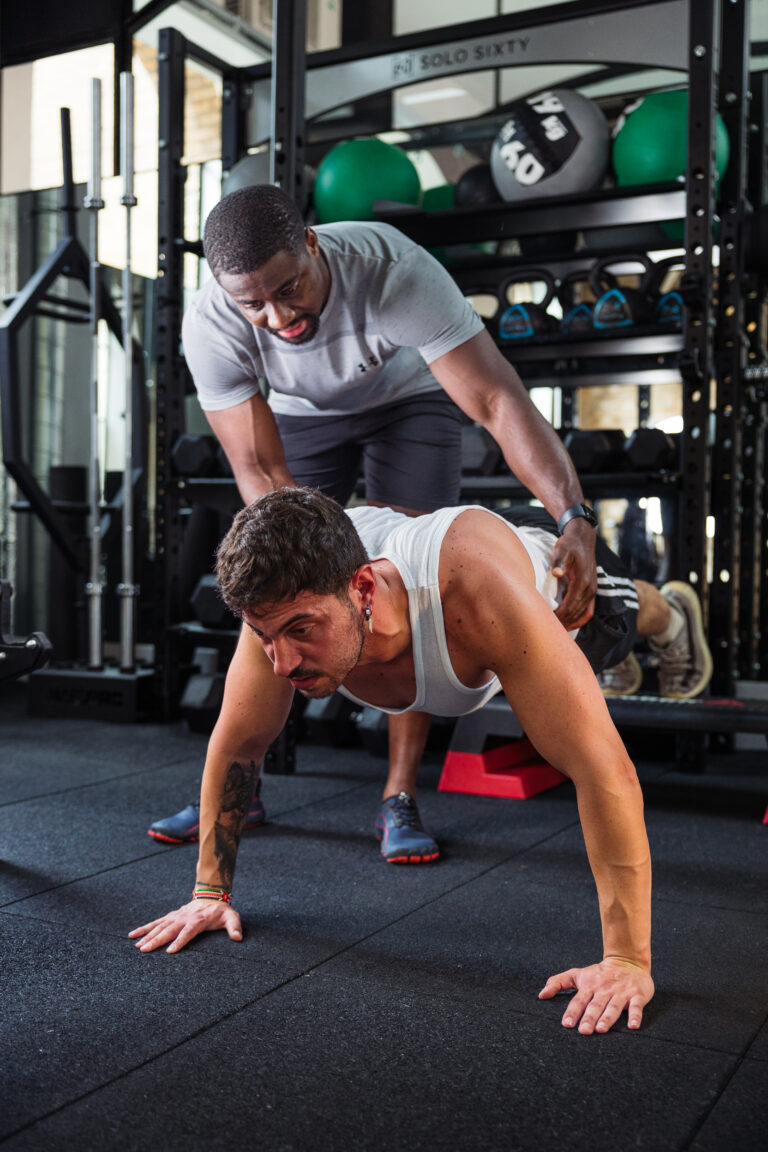
The Science Behind a Structured Training Split
A training split is your roadmap to success in the gym. It’s a schedule that strategically divides your workouts by muscle group or movement pattern. For anyone serious about strength training, having a structured split is non-negotiable. It’s the difference between aimlessly wandering around the gym and training with purpose and precision. Here’s a deeper look at why a well-designed training split is so crucial for your progress:
- Adequate Recovery: When you lift weights, you create microscopic tears in your muscle fibers. Muscle growth, or hypertrophy, occurs when these fibers repair and rebuild stronger than before. A training split ensures that you’re not overworking the same muscle groups on consecutive days, allowing for adequate recovery time, which is crucial for growth and injury prevention.
- Training Volume and Intensity: By focusing on specific muscle groups each day, you can increase the total training volume (sets x reps x weight) and intensity for each muscle group. This targeted approach is more effective for stimulating muscle growth than full-body workouts performed multiple times a week, especially as you become more advanced.
- Consistency and Routine: A well-planned split provides structure and makes it easier to stay consistent with your training. Knowing exactly what you need to do each day you step into the gym eliminates guesswork and keeps you motivated.
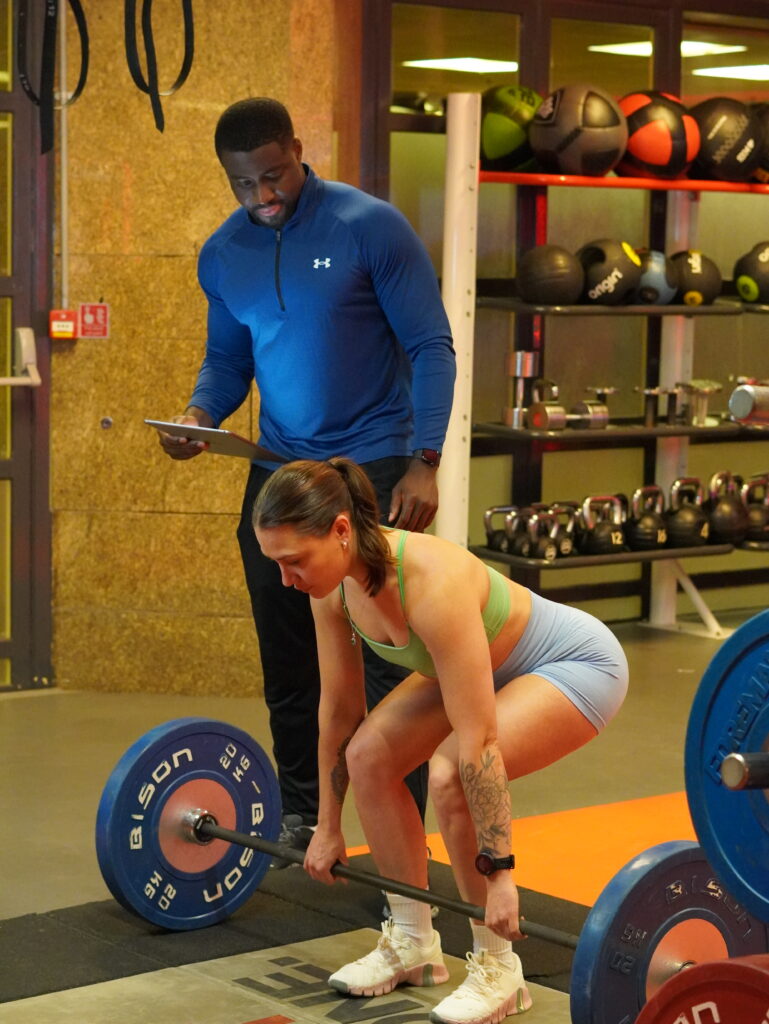
Progressive Overload: The Engine of Muscle Growth
Your body is a master of adaptation. It’s designed to handle the stresses you place upon it. If you consistently perform the same workout with the same weights, sets, and reps, your body will eventually adapt, and your progress will grind to a halt. This is a phenomenon known as a plateau. To continue making progress, you need to give your body a reason to adapt further. This is where the principle of progressive overload comes into play. Progressive overload is the art and science of gradually increasing the demands placed on your musculoskeletal system over time. This continuous challenge is what forces your muscles to grow bigger and stronger.
Here’s how you can implement progressive overload:
- Increase the Weight: The most common method. Aim to lift slightly heavier weights as you get stronger. Even a small increase of 1.25kg or 2.5kg is progress.
- Increase the Reps: If you can’t increase the weight, try to perform more repetitions with the same weight. For example, if you performed 8 reps last week, aim for 10-12 reps this week.
- Increase the Sets: Add an extra set to one or more of your exercises to increase the total training volume.
- Decrease Rest Time: Reducing the rest time between sets makes your workouts more challenging and can improve muscular endurance.
- Improve Form: Focusing on better technique and a full range of motion can also be a form of progressive overload, as it makes the exercise more effective.
To effectively implement progressive overload, it’s essential to track your workouts. The 12Reps app is an excellent workout tracker tool for this, allowing you to log your exercises, weights, sets, and reps, so you can easily see your progress and plan your next session.
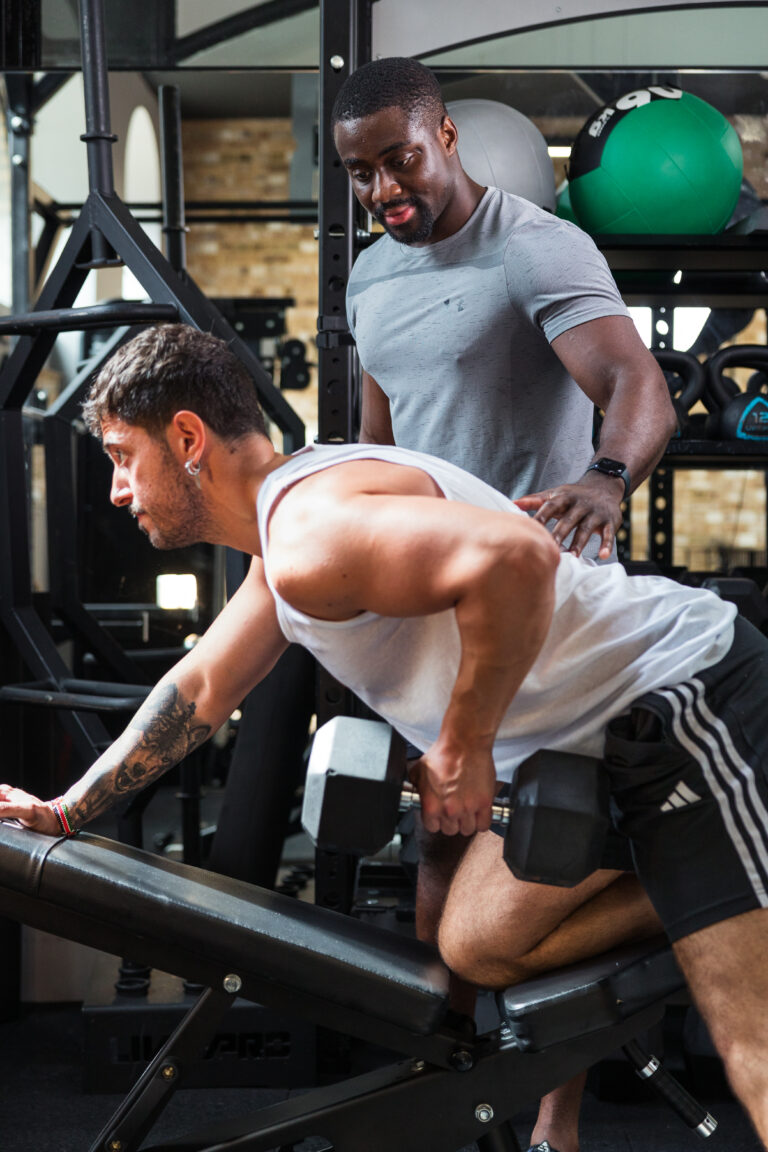
Fueling Your Growth: The Pillars of Muscle-Building Nutrition and Recovery
Lifting weights is the stimulus for muscle growth, but the actual growth happens when you’re resting and feeding your body. You can have the best training program in the world, but without proper nutrition and recovery, your results will be severely compromised. Think of your body as a high-performance vehicle. Your workouts are the engine, but your nutrition and recovery are the fuel and maintenance that keep it running optimally.
Sleep and Recovery
Sleep is when the magic happens. During deep sleep, your body releases growth hormone, which is essential for muscle repair and growth. Aim for 7-9 hours of quality sleep per night. Lack of sleep can lead to decreased performance, impaired recovery, and an increased risk of injury.
Nutrition for Muscle Gain
Nutrition plays a massive role in building lean muscle mass while keeping body fat low. You can’t out-train a bad diet. To build muscle, you need to be in a slight caloric surplus, meaning you consume more calories than you burn. However, the quality of these calories is what matters most.
Here’s a breakdown of the macronutrients you need:
- Protein: The building block of muscle. Aim for 1.6-2.2 grams of protein per kilogram of body weight. Protein provides the amino acids necessary for muscle repair and growth.
- Carbohydrates: Your body’s primary energy source. Carbohydrates fuel your workouts and replenish glycogen stores in your muscles after training. Aim for 3-5 grams of carbs per kilogram of body weight.
- Fats: Essential for hormone production, including testosterone, which is vital for muscle growth. Aim for 0.8-1.2 grams of fat per kilogram of body weight.
Example for a 70kg individual trying to gain muscle:
- Protein: 70kg x 2.0g/kg = 140g of protein per day (560 calories)
- Carbohydrates: 70kg x 4.0g/kg = 280g of carbs per day (1120 calories)
- Fats: 70kg x 1.0g/kg = 70g of fat per day (630 calories)
Total Daily Intake: Approximately 2310 calories. This is a starting point, and you may need to adjust your intake based on your metabolism and activity level.
The 12-Week Beginner Strength Program
This comprehensive 12-week program is your blueprint for building a stronger, more muscular physique. It’s designed to be challenging yet achievable for a beginner, with a strong emphasis on progressive overload. To get the most out of this program, it is imperative that you track your workouts meticulously. The 12Reps app is the perfect tool for this, allowing you to log every set, rep, and weight lifted. This data is not just for show; it’s your feedback mechanism, telling you when it’s time to push harder and increase the challenge.
Warm-up (10 minutes)
Begin each workout with a 10-minute warm-up to increase your heart rate and prepare your muscles for exercise. Choose one of the following:
- Incline walk on a treadmill
- Rowing machine
After your cardio warm-up, perform the following mobility stretches:
Stretch | Sets | Reps/Duration |
Cat-Cow | 2 | 10 reps |
World’s Greatest Stretch | 2 | 5 reps/side |
Hamstring Stretch | 2 | 30 sec/side |
The 5-Day Split
Here is your 5-day training split. Each workout includes 5-6 exercises, with 3-4 sets per exercise. The first set should be a lighter warm-up set to prepare for the heavier sets to follow. Rest for 60-90 seconds between sets.
Workout 1: Chest and Back
Exercise | Sets | Reps | Rest (seconds) |
Barbell Bench Press | 5 | 8-12 | 90 |
Lat Pulldown | 5 | 10-15 | 60 |
Incline Dumbbell Press | 5 | 10-12 | 60 |
Seated Cable Row | 5 | 12-15 | 60 |
Dumbbell Flyes | 5 | 12-15 | 60 |
TRX Rows | 5 | 15-20 | 60 |
Workout 2: Leg Day (Hamstrings, Glutes, and Quads)
Exercise | Sets | Reps | Rest (seconds) |
Barbell Squats | 5 | 8-12 | 90 |
Romanian Deadlifts | 5 | 10-15 | 60 |
Leg Press | 5 | 12-15 | 60 |
Hip Thrusts | 5 | 12-15 | 60 |
Leg Curls | 5 | 15-20 | 60 |
Glute Kickbacks (cable) or glute bridge | 4 | 15-20 | 60 |
Workout 3: Shoulders and Biceps
Exercise | Sets | Reps | Rest (seconds) |
Overhead Press (Barbell) | 5 | 8-12 | 90 |
Dumbbell Lateral Raises | 5 | 12-15 | 60 |
Barbell Curls | 4 | 10-12 | 60 |
Seated Dumbbell Arnold Press | 5 | 10-12 | 60 |
Hammer Curls | 4 | 12-15 | 60 |
TRX Bicep Curls or cable bar biceps curl | 4 | 15-20 | 60 |
Workout 4: Back, Triceps, and Glutes
Exercise | Sets | Reps | Rest (seconds) |
Pull-Ups (or assisted) | 8 | 6-10 | 90 |
Close-Grip Bench Press | 5 | 8-12 | 90 |
Dumbbell Rows | 5 | 10-12 | 60 |
Tricep Pushdowns (cable) | 5 | 12-15 | 60 |
Kettlebell Swings | 4 | 15-20 | 60 |
Sled Push | 5 | 20m | 90 |
Workout 5: Interval Cardio and Core
For your interval cardio, choose one of the following and perform a 20-minute session:
- Treadmill: 1 minute of running at a high intensity, followed by 2 minutes of walking. Repeat for 25 minutes.
- Running Outside: 1 minute of sprinting, followed by 2 minutes of jogging. Repeat for 25 minutes.
- Wattbike: 30 seconds of all-out sprinting, followed by 90 seconds of easy pedaling. Repeat for 25 minutes.
Core Finisher
Perform the following core exercises as a circuit, with minimal rest between exercises. Rest for 60 seconds after each round and complete 3 rounds.
Exercise | Duration/Reps |
Plank | 45 seconds |
Flutter Kicks | 45 seconds |
Decline Sit-ups | 10 reps |
Cool-down (10 minutes)
After each workout, perform a 10-minute cool-down to help your body begin the recovery process. Choose one of the following:
- Stair master at a low intensity
- Incline walk on a treadmill

Your Digital Training Partner: The 12Reps App
In the digital age, we have access to tools that can significantly enhance our training experience. The 12Reps app is more than just a workout logger; it’s your digital training partner, keeping you on track and motivated throughout your fitness journey. To truly maximise your results from this program, consistent and accurate tracking is non-negotiable. The app provides a seamless way to do this, but its benefits extend far beyond simple logging.
You can build this entire session in the 12Reps app by navigating to ‘Build Your Routine’. Log your weights, reps, and sets with ease, and use the app’s stopwatch to monitor your rest periods. You can also pre-plan your workouts, save them for later, and even share your personal bests on social media.
Ready to take your training to the next level? Download the 12Reps app for a free trial and get personalised, smart-driven workouts, comprehensive progress tracking, and access to expert-designed routines.
Conclusion
Embarking on a journey to gain 10kg of lean muscle in a year is a significant commitment, but with the right plan and a consistent effort, it is an entirely achievable goal for a dedicated beginner. This 5-day strength training split is more than just a collection of exercises; it’s a comprehensive system that integrates the fundamental principles of muscle hypertrophy. By embracing progressive overload, fueling your body with the right nutrients, and prioritising recovery, you are laying the foundation for a remarkable transformation. Remember that consistency is the most critical ingredient for success. There will be days when you feel tired or unmotivated, but it’s on those days that your discipline will be forged. Be patient with your body, trust the process, and celebrate the small victories along the way. Your journey to a stronger, more muscular you starts now. Your hard work and dedication will undoubtedly pay off, and the results will speak for themselves.


